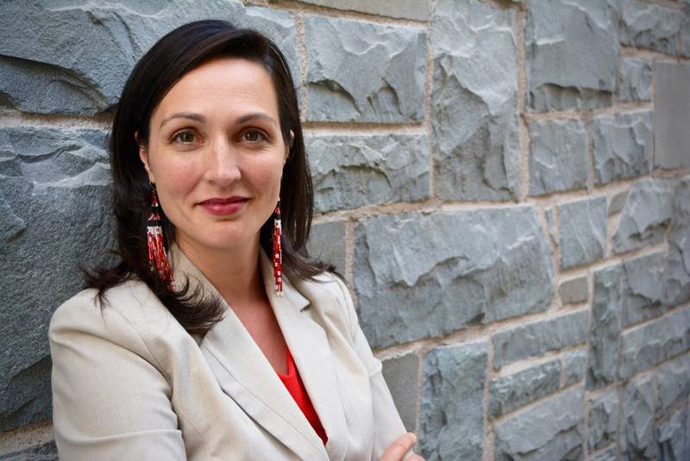Dalhousie professor of Aboriginal law pursuing PhD at UAlberta’s Faculty of Law
Helen Metella - 1 December 2020

When Canadians ask, “How can we possibly recognize the laws of Indigenous peoples, how will it work, what about the Constitution?” Naiomi Metallic has a very straightforward answer.
“We already have a pluralistic nation in Canada,” says Metallic, a new PhD candidate at the University of Alberta Faculty of Law who is working on those very questions.
“We have federal and provincial governments, with a whole bunch of different laws and processes developed over time that need to be worked out when challenges between legal orders occur. We have municipalities that interact with provinces; we have civil law and common law. If we have figured out all those things, we can figure this out, too. It’s not insurmountable.”
And Metallic is perfectly positioned to help figure it out.
An assistant professor at the Schulich School of Law at Dalhousie University, where she’s the Chancellor’s Chair in Aboriginal Law and Policy, she was born and raised on the Listuguj Mi’gmaq First Nation on the Gaspé Coast of Quebec.
Before entering academia in 2016, she practised law with a focus on Aboriginal law and Indigenous governance since 2008 and clerked at the Supreme Court of Canada for the Hon. Justice Michel Bastarache for a year before that.
Simon v. Canada
Among the files Metallic dealt with was Simon v. Canada, in which she represented all the First Nations in the Maritimes in a matter against the federal government about changes to income assistance rates and eligibility criteria in those First Nations. At issue was the potential negative impact of the unilateral changes, which First Nations argued would result in lower rates, increased poverty and greater child apprehensions in the community.
While winning an injunction preventing the government from putting the changes into effect and at first instance, her clients were ultimately not successful. But the long battle led to changes after the fact, said Metallic, including working with the current government to implement significant reforms.
“That case really opened my eyes about how service delivery in First Nations works and how different it is than in the provinces. First Nations have systematically been underfunded for services for decades and that’s resulted in more First Nation children being in care, on social assistance. It impacts housing and carries on across the board … if we don’t fix those basic problems, then our efforts at higher levels (of reconciliation) will not succeed.”
Partly because of that case, Metallic decided to enter academia, with a goal of educating more young lawyers about Indigenous law, which she’d had very little exposure to as a law student.
Five areas of study
She chose UAlberta’s Faculty of Law for her PhD studies because of the groundbreaking scholarship of Professor Hadley Friedland, a leader in working with Indigenous stories to draw out Indigenous law and demonstrating how it can co-exist with and even enhance Canadian law.
For her research, which Friedland is supervising, Metallic intends to address five main questions about Indigenous law.
“Number one: what is Indigenous law and what work is being done to revive it? Number two: what are the limits on it and where, when and who does it apply to and when does the Charter apply?
“Then there are many questions around the implementation, like who and how are Indigenous laws enforced? Do we have Indigenous courts adjudicating laws, like in the U.S.? Next, what happens when there is a potential conflict between provincial or federal law and Indigenous law? Finally, what are the roles of other governments in Canada to support the revitalization and implementation of Indigenous law? Does Canada have an obligation to fund communities in taking on this work?”
It’s a massive mountain of questions Metallic acknowledges, but her background knowledge of Constitutional law and her more current knowledge of Indigenous law provides her a strong matrix of skills to answer them, she said.
Moreover, “if we don’t start answering them, then a lot of people will say that making space for Indigenous law in Canada can’t be done. It certainly can.”